You may remember my recent 486 PC build, I enjoyed doing it, but I had several issues with it. It also didn’t quite have everything I wanted in it. I ended up making huge changes. This post covers everything I have done to it since then.
Issues
The biggest issue I had was stability. No matter how I configured things, such as the ISA bus and sound card settings, it would crash regularly with games. Wolfenstein 3D was the most sensitive to this, at most I could make a minute of game play before crashing.
In addition, I noticed when leaving the machine soft powered off that the PSU was getting very warm. The case around the PSU would reach what felt like 30°C. This will be the way the PSU generates the 5V standby power, which is completely unused in this machine.
Then the sound. The PicoGUS is very good at emulating the Gravis Ultrasound, but more games support the Sound Blaster. The Sound Blaster support if very good, but only supports the Sound Blaster 2.0, I wanted Sound Blaster Pro support for better stereo sound.
Finally, there were some minor upgrades and additions I wanted to make. Especially having some way of adding a mouse.
Motherboard
I figured the easiest way to solve the stability would be to use a different motherboard with a chipset that is known to be stable with cards such as PicoGUS. I found this board on eBay at a reasonable price.

It is an ECS UA4982 motherboard with a UM8498/UM8496 chipset. It came with a 486DX2/66 CPU in the socket and 32MB of 72pin SIMMs. This motherboard could handle 64MB, which is a lot for a 486. In theory, this motherboard can take a 3.3v or 3.45v CPU, but the voltage reference has not been fitted.
I wanted to put my Gainbery MAXimizer AMD 5×86 based CPU in there instead, but I noticed that it was getting quite hot to the touch, and likely not getting much in the way of ventilation. I therefore took a spare silent 40mm fan and designed a mount to 3D print that would clip the fan to the heatsink of the CPU. This is the end result.
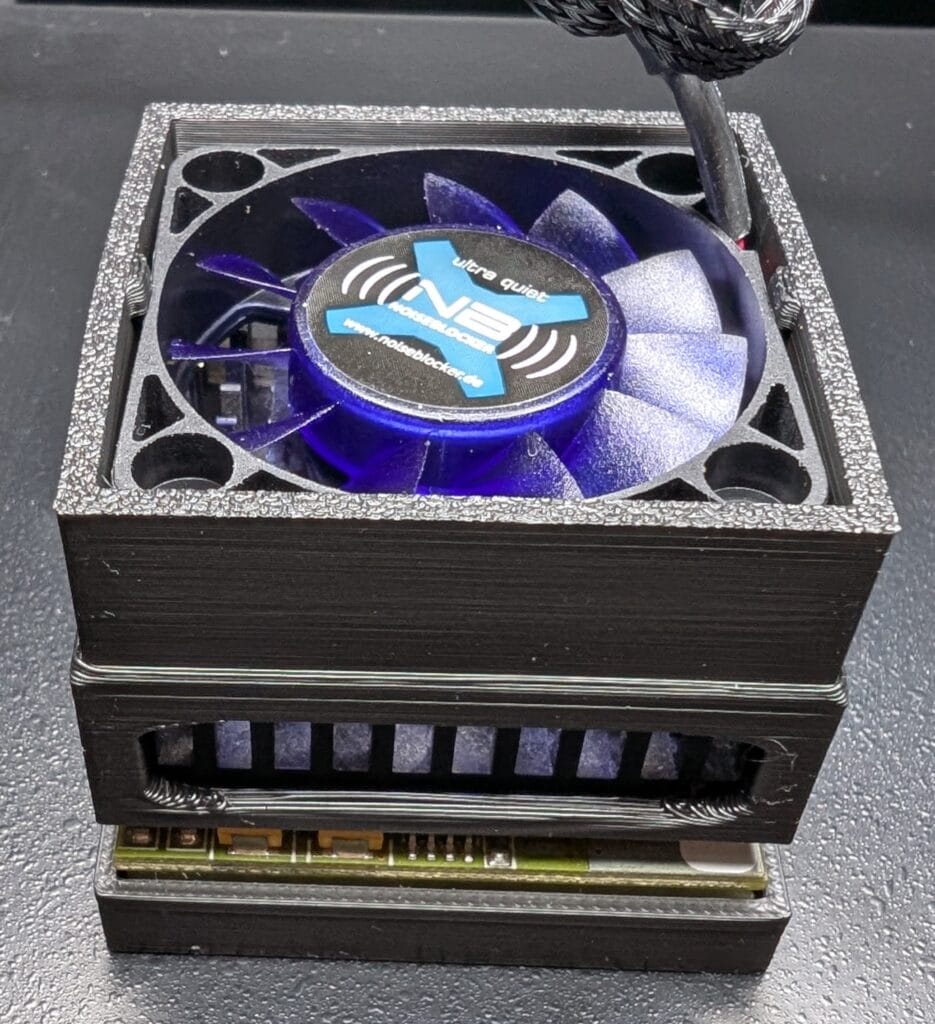
Whilst it may not look the prettiest, it worked first time, so I didn’t feel a need to tweak it further. It keeps the CPU pretty cool as well.
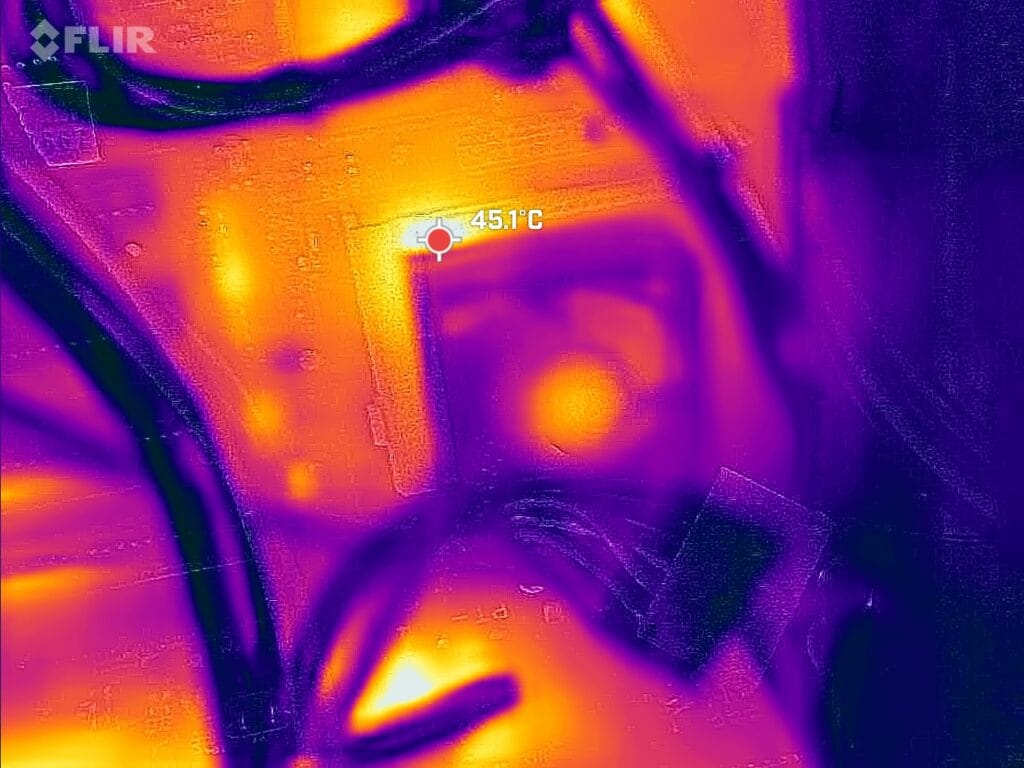
This photo is after several minutes of running, and the hotspot is the voltage reference on the CPU board, it isn’t actually touching the heatsink.
Whilst fitting this combination into the case, I swapped out the PSU for my test-bench one, which is a similar specification (5V heavy with a -5V line available), but made by Advantech.
Sound Upgrade
As I mentioned before, I wanted to upgrade my sound card. I’ll still keep the PicoGUS for MPU-401 duties, but I wanted a real Sound Blaster type card installed. The first card I tried was a Yamaha Audician 32 Plus, a few people had recommended this card to me.
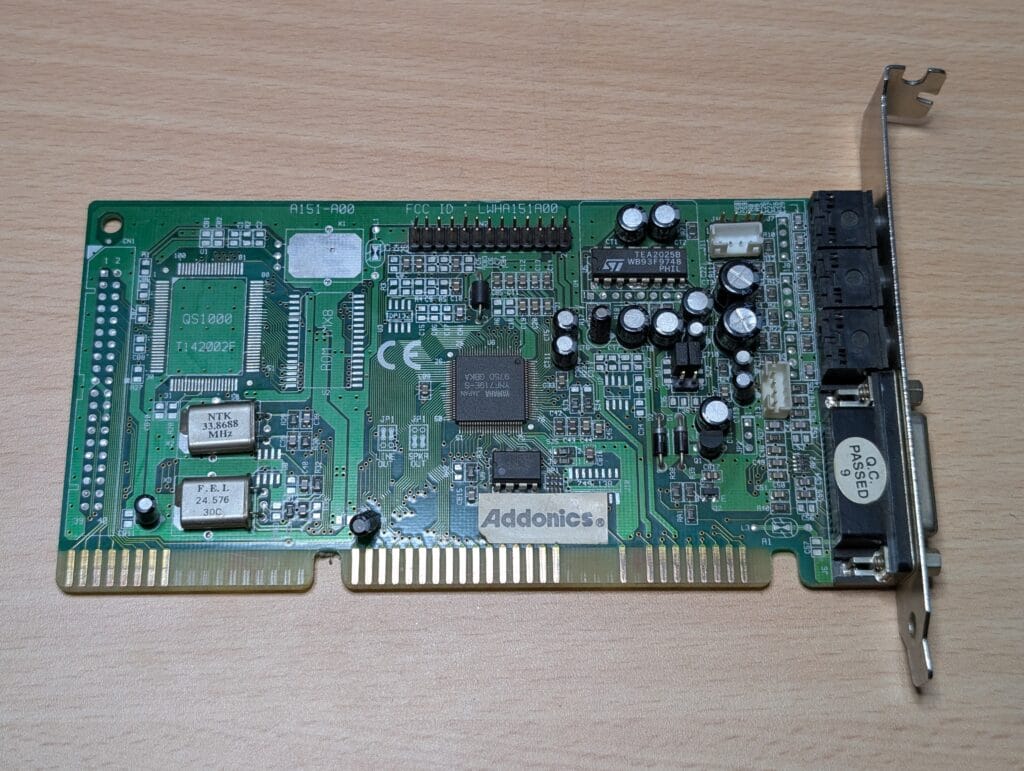
Instead of using jumpers to configure it, you need to use software, and this is where problems started to occur. First of all, I noticed that with both the PicoGUS and this card, DMA 1 would just completely crash the system. I believe this interferes with the Adaptec SCSI card, but it is difficult to prove at this stage. DMA 3 worked better, along with IRQ 7. But it was extremely difficult to get the settings to save, the Windows Sound Source mode wouldn’t work at all, so it wouldn’t even let me save.
I had these issues on both motherboards. So, I’m guessing it is a compatibility issue. Using the Unisound configuration tool worked better, and I did get some good sound out of it, but just so many stability issues.
So, I decided to swap to a card which should be a bit more reliable, an ESS1869F based card.
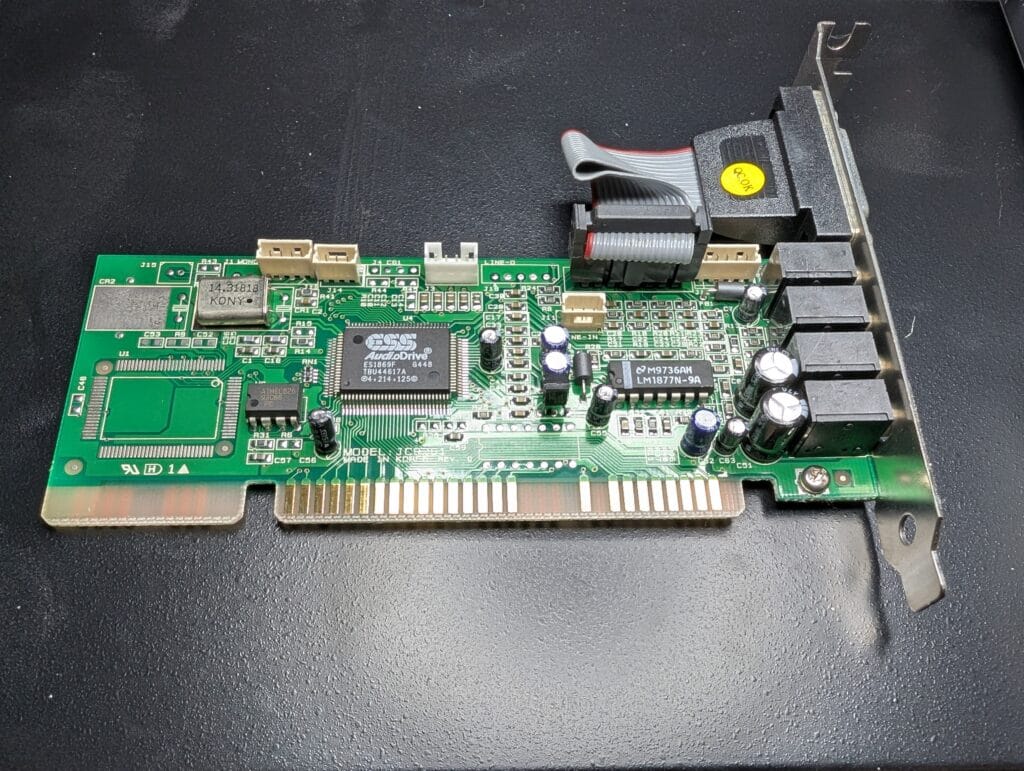
This again requires a utility to configure, but things worked better. Here is how I have everything setup:
- VGA card IRQ 2/9 disabled (I’ll get to that later)
- PicoGUS set to MPU-401 mode. IRQ 2/9, no DMA, 330h for MIDI
- ESS card set to IRQ 7, DMA 3 low, DMA 0 high, 300h for MIDI
Most games default to 330h for MIDI, so the music will split off into my MIDI hardware via PicoGUS, whilst sound effects go via the ESS card.
This setup worked incredibly well, I now have a Roland Sound Canvas SC-55 to go along with my MT-32, and it sounds amazing. This will be something for an upcoming blog post.
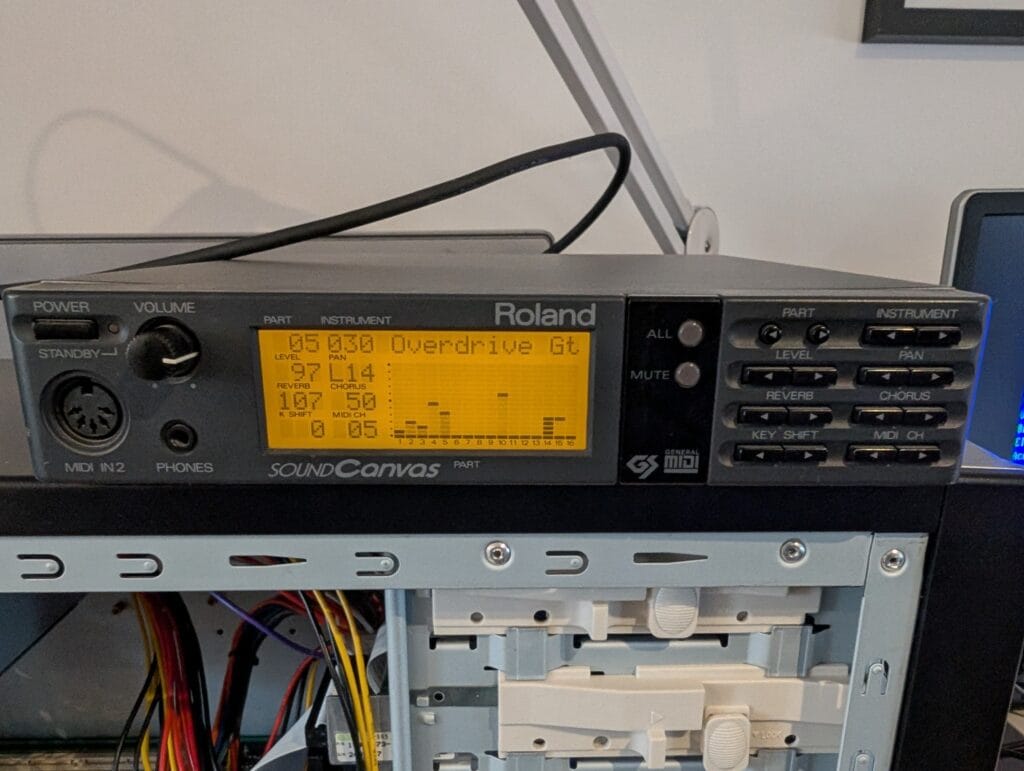
Video
The Trident VGA card was great to test things with, but the performance of those cards is not great. We have a VLB bus on this motherboard just itching for a fast video card.
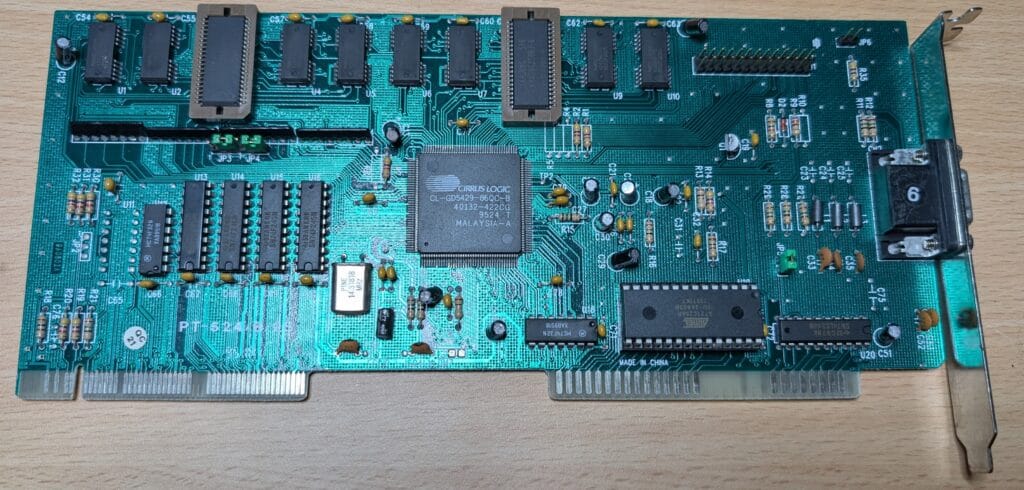
This is a 2MB Pine PT-524 VGA card based on a Cirrus Logic GD-5429 graphic chip. As you can see, it uses VLB. Gammitin on X and BlueSky sent me four of these cards to repair and upgrade from 1MB to 2MB, allowing me to keep one. At this moment in time, I have three of the four running and all upgraded.
In every benchmark I’ve tried, this provides roughly 2x the FPS performance of the Trident card I was using before.
The green jumper near the VGA connector is for IRQ 2/9. When enabled, this IRQ basically fires on VSYNC. Very few software titles actually need this, so I removed the jumper to disable it. Freeing up the IRQ for the MPU-401.
Mouse
Those who know me, know that I’m a sucker for a good trackball. I used to get RSI from using a mouse, but that went away when I moved to Kensington trackballs on my daily-driver machine. I could have gone with a basic serial mouse, but that isn’t me. This beauty suddenly came up, which I had never seen before, and I had to have it.
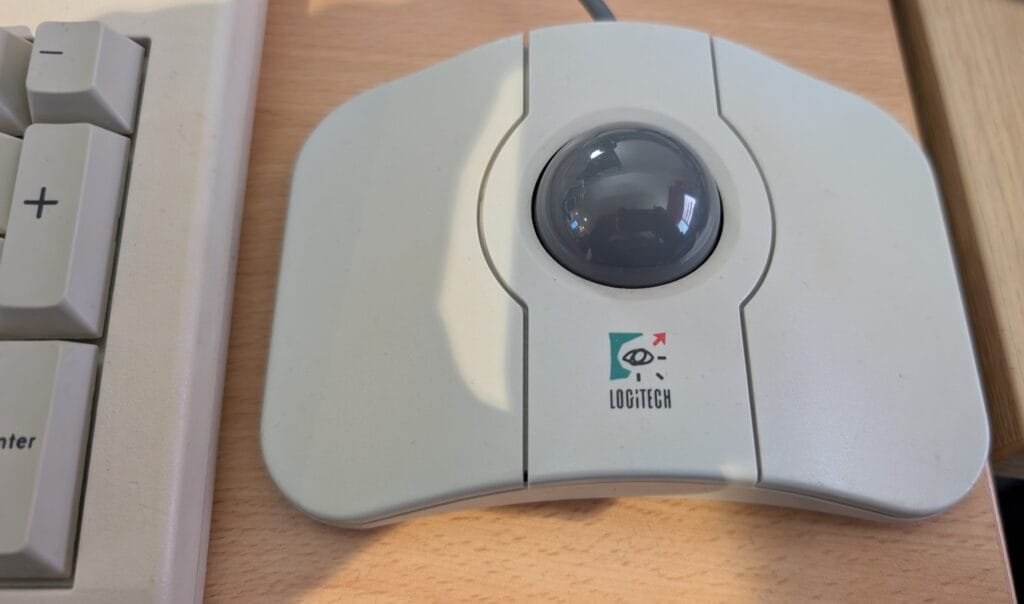
It is a Logitech T-MA CST2 trackball. There is no manufacture date on it, but the FCC ID was granted in 1994. It presents itself as a Microsoft serial mouse, but I think it looks was ahead of its time. It has quite a smooth operation and should be great for point and click style games.
Of course, I need something to connect the mouse to. This dual-serial card intrigued me. It is a basic card, just two W86C451 serial port controllers, each with a GD75232 transceiver.
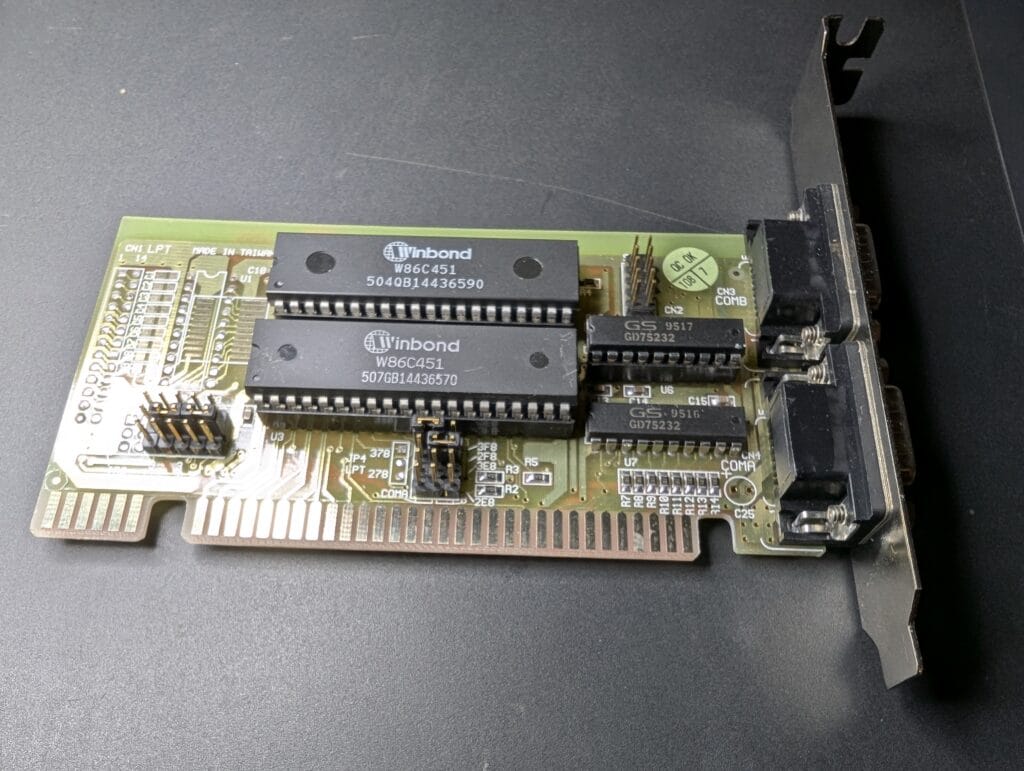
It was configured to be COM3 and COM4 in a system. Figuring out how to configure it for COM1 and COM2 took a little while, but I got there in the end. Here is how to do it if anyone ever finds these cards.
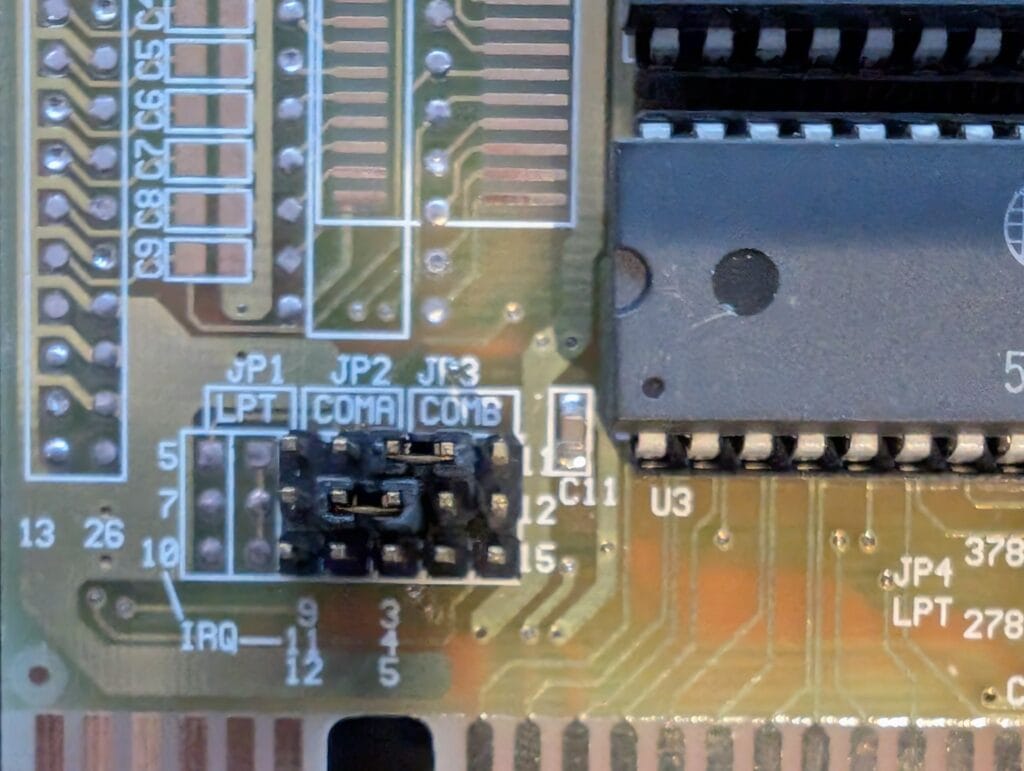
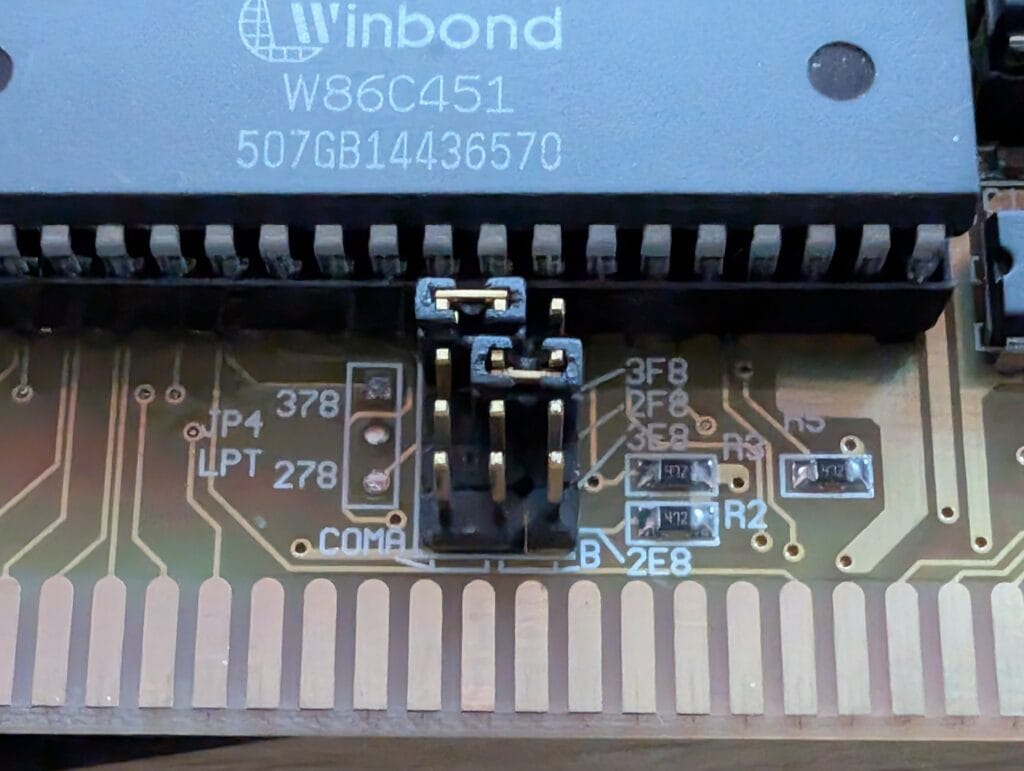
When I popped this in and plugged the mouse in, it worked perfectly with a standard mouse driver.
Final machine
I now have a machine I’m very happy with. It is very stable with every game I throw at it, and I can use it with my MT-32 and SC-55 for some fantastic in-game music, whilst having Sound Blaster Pro level stereo sound effects. I’m extremely happy with the result.
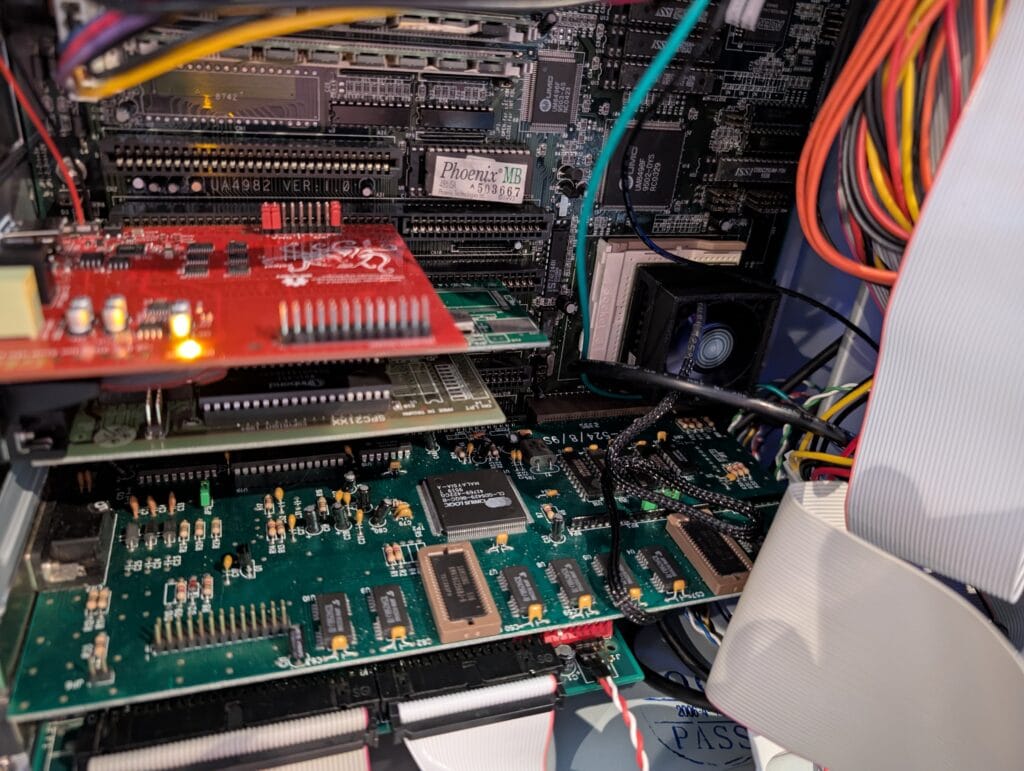
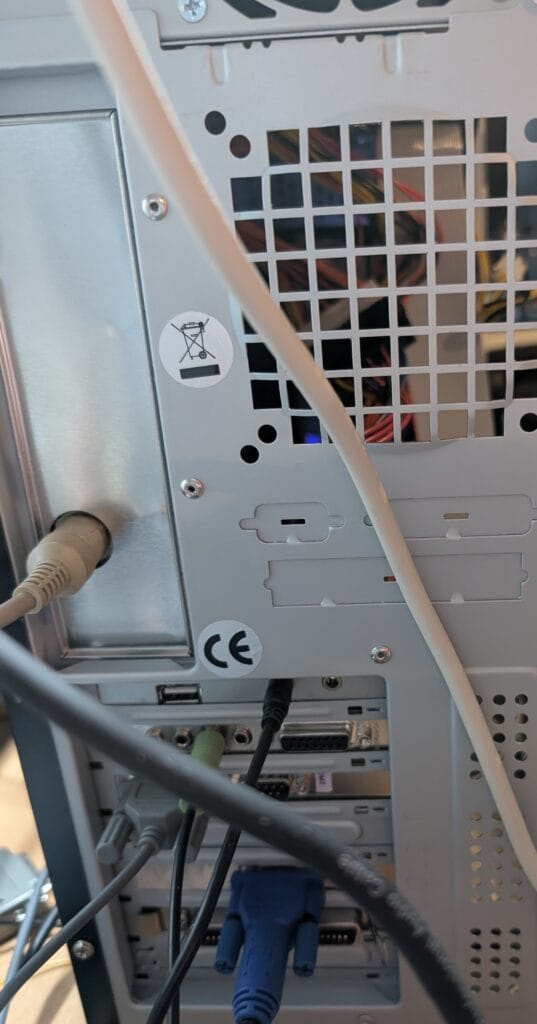

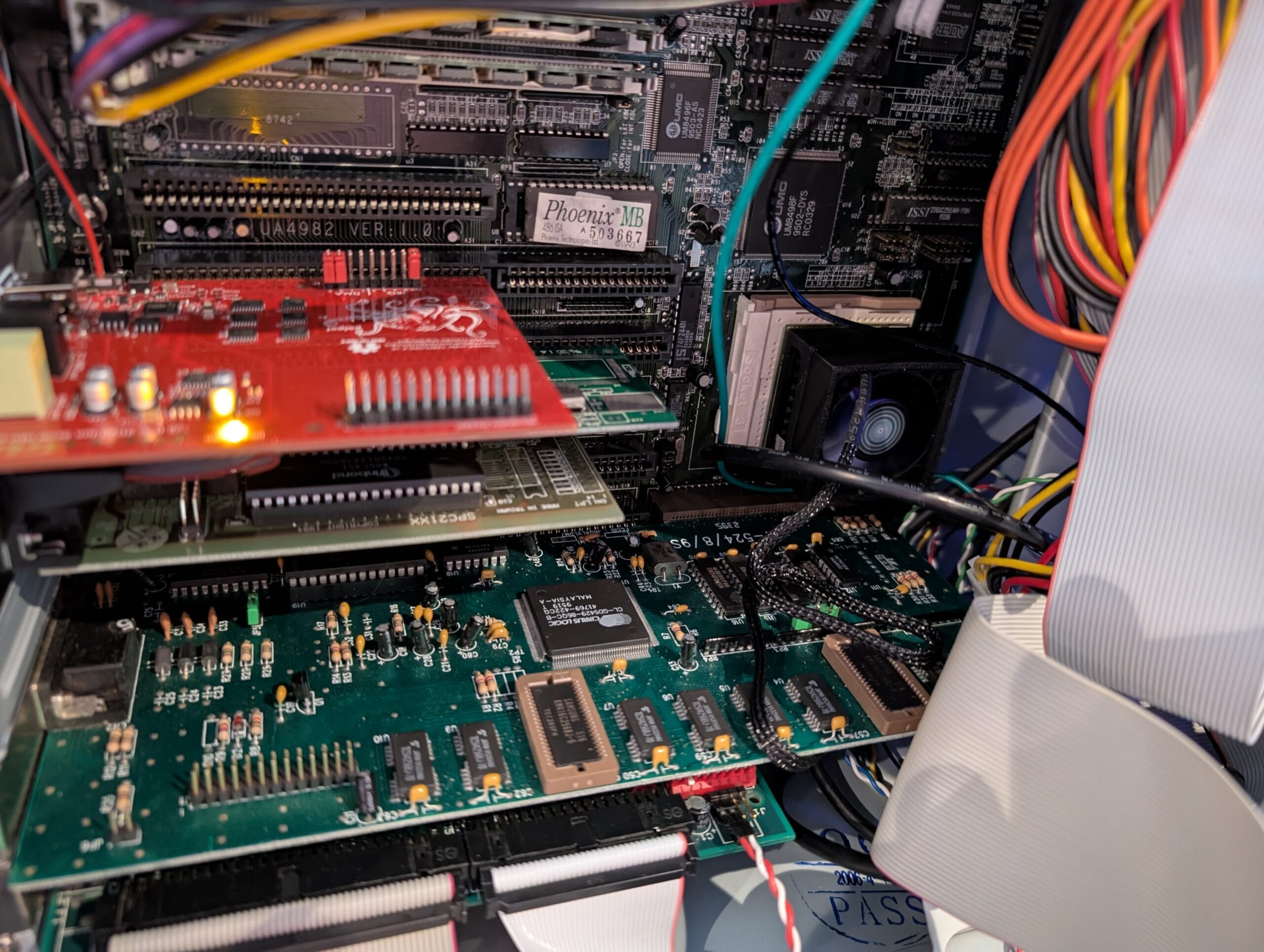
Leave a Reply